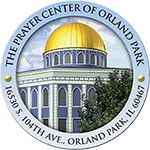The Human Beings of Al-Hajj
The House of Allah is beautiful, you have described it completely.
Now show us a sign of the Lord of the House.
You say you have visited the garden, where are your roses?
You are coming out of the sea, you say, where is the pearl of your soul?
These were the words of the thirteenth century celebrated poet, Jalaluddin Rumi, addressing the pilgrims. He believed and we believe that Hajj is a journey that produces a change, a transformation, or a transmutation in the life of the pilgrims. The objective of Al-Hajj is to produce new human beings with better qualities and practices.
The first house built for the people is selected as the place to start the journey of transformation. “The first house appointed for the people was that at Bakkah.” [3:96]
It is the house of Allah but at the same time the house of the people. They must respond to the call of pilgrimage and learn how to make that journey possible and easy. “And proclaim the pilgrimage among the people.” [22:27]
For the pilgrims to enter the Sacred House of Allah, they must elevate themselves to the state of sacredness or “ihram .(إحرام) Symbolically, they wear simple white garments. They put themselves in the mold of cleanliness, purity, sanctity, and freedom. The self is transformed and takes the shape of the mold. After a short period of time, the mold is taken away and the garments of Ihram are taken off. No need for them anymore because new human beings are being molded. The Sacred House of Allah has provided them with the means to enrich their lives. “Allah made the Ka’ba, the Sacred House of Allah, a means of support for the people.” [5:97]
The new human beings, molded by the sanctity of Ka’ba are preparing for the summit of Arafa. They need all the energy to ascend to the higher orbit. Tawaf طَوَاف, circling around Ka’ba; and Sa’y سَعْي, running between Safa and Marwa symbolize the effort, the struggle, the patience, and the eclectic experience required to reach the top of Mount Arafa. The journey to Arafa requires the patience and perseverance of Hagar running between Safa and Marwa searching for water. It is not by chance to see the verse describing Safa and Marwa interjected in the passage addressing the virtue of “sabr.” In fact, the apogee of Arafa symbolizing success and guidance is the reward for “sabr.”
“And give glad tidings to those who patiently persevere.” [2:155]
“They are the ones to receive guidance.” [2:157]
Arafa signifies knowledge, gnosis “irfan”عِرْفان, and “taaruf”تَعارُف or celebration of diversity. The pilgrims will know more about themselves and about others. They experience their own subjectivity in the search of what is higher and better. No one must tell them about it. They taste it, and this taste is their intuitive cognition which goes beyond reason and rationality. In Arafa, you encounter human beings with these quintessential characteristics: the ability to perceive, the capacity to know, and the capability to experience things. One must not wonder about this transformation because Arafa witnessed the most important change and transmutation in the life of humanity. At this high location Quran was completed and perfected. “This day I have perfected your religion for you, completed my favor upon you, and have chosen for you Islam as your religion.” [5:3]
Arafa, therefore, is the core, the nub, and the essence of Hajj as Prophet Mohammad (ﷺ) said: “Hajj is Arafa.”
Coming down from the top of Mount Arafa does not mean abandoning the peak, but the pilgrims will bring the quality of the peak to the experienced life. They come down with the people. They belong to the people. They are neither superior nor inferior to them.
“Then pass on at a quick pace from the place where the people do so.” [2:199]
Reclaiming their common humanity is the best transformation the pilgrims undergo. The verse continues “And asks for the forgiveness of Allah.” [2:199]
Asking for forgiveness for no sin committed is a clear indication for the pilgrims to continue the journey of transformation from self to self, and to create an environment where forgiveness and mercy prevail.
The pilgrims are qualitatively ready to declare their victory- victory of the people and the concept of “the people.” They stone Satan and the evil he symbolizes and represents. It is a moment of transcendence above fire reminiscent of Prophet Ibrahim rising above fire and its burning potential. “We said: O fire! Be cool and peaceful for Ibrahim.” [21:69]
When the pilgrims chant “I am here Lord, at your service,” they inscribe and enunciate the very grammar and construct of assent, “tasdiq”تَصْدِيق, which means in essence truth telling, verification, and calibration. The chanting resonates with that of Ibrahim “who was a man of Truth” [19:41] and “who fulfilled his engagement.” [53:37] It resonates also with Ismael who “was strictly true to what he promised.” [19:54] The pilgrims are reconstructing the past and the legacy of prophecy as they exercise their own “tasdiq.” Their “tasdiq” is not static but a dynamic struggle that brings into their lives the best as they enter the lives of other people and other times
“So announce the good news to my worshippers- those who listen to the word and follow the better in it.” [39:17-18]
By Dr. Walid Khayr




